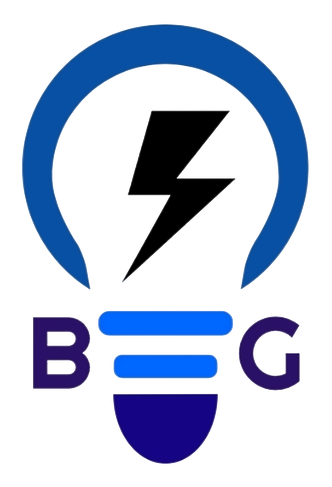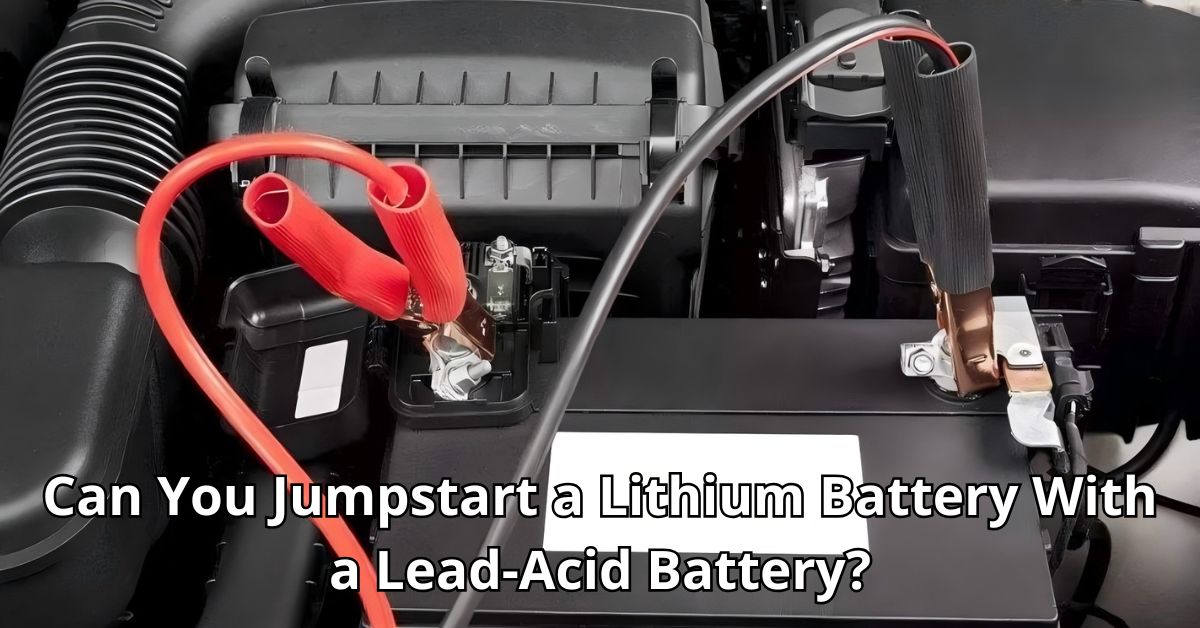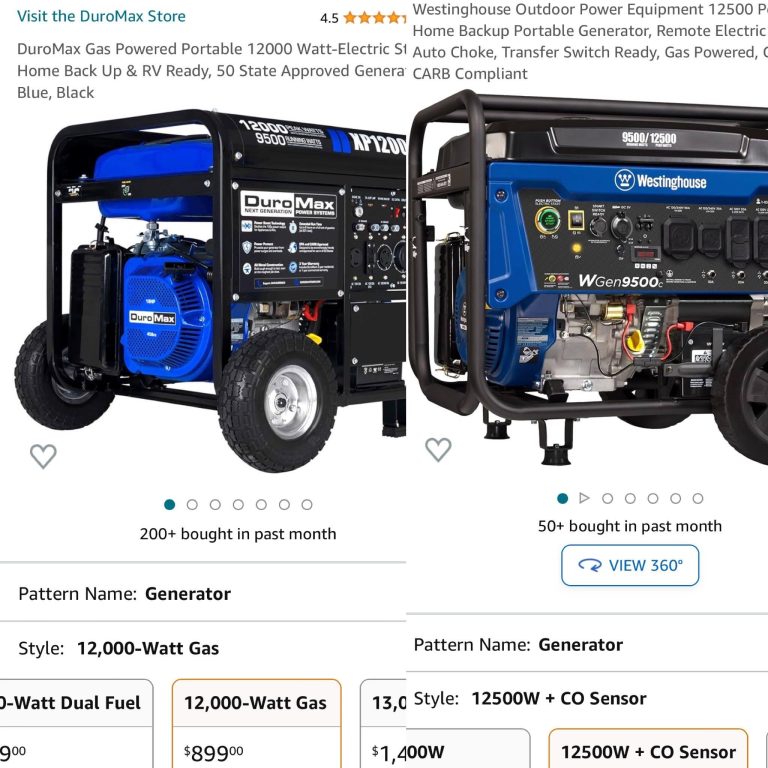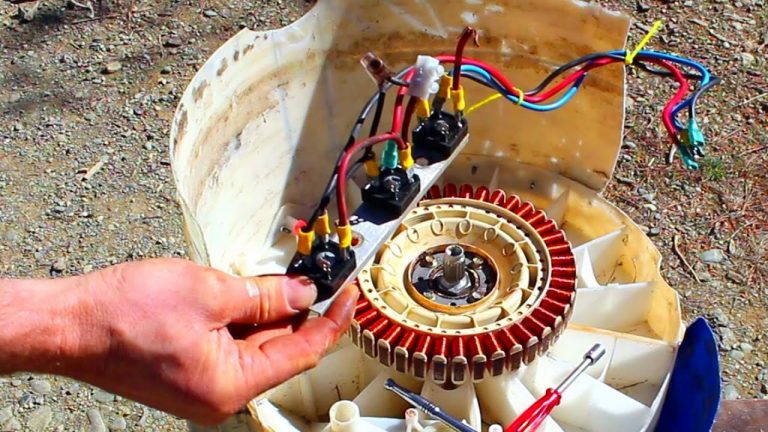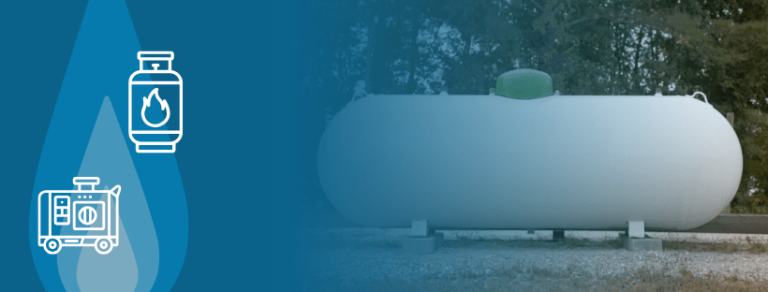Can You Jumpstart a Lithium Battery With a Lead-Acid Battery? Discover the Facts
No, you cannot jumpstart a lithium battery with a lead-acid battery. It is unsafe and can damage both batteries.
Jumpstarting a vehicle is a common practice for lead-acid batteries. But with lithium batteries, the process is different. Using a lead-acid battery to jumpstart a lithium battery can cause serious harm. It can lead to overheating, fire, or even explosions.
Lithium batteries have unique charging needs. They require specific methods to jumpstart safely. Knowing the right technique is crucial for maintaining your battery’s health and ensuring your safety. In this blog post, we will explore why you can’t use a lead-acid battery for this purpose. We’ll also discuss the correct ways to handle lithium batteries. Stay informed to avoid costly mistakes and stay safe.

Credit: www.redwaypower.com
Introduction To Lithium And Lead-acid Batteries
Jumpstarting a lithium battery with a lead-acid battery is possible but requires caution. Ensure both batteries have similar voltage to avoid damage.
Lithium and lead-acid batteries are widely used in various applications. Understanding their differences can help in making better choices for your needs. This section will introduce the basics of each type of battery.
Battery Basics
Batteries store energy for later use. They come in many types, each with its own advantages.
Lithium batteries are lightweight and have a high energy density. They are commonly used in smartphones, laptops, and electric vehicles.
Lead-acid batteries are heavier but cost less. They are often found in cars, boats, and backup power systems.
Key Differences
Lithium batteries charge quickly and last longer. They can handle more charge-discharge cycles.
Lead-acid batteries charge slower and have a shorter lifespan. They are more tolerant to overcharging.
Lithium batteries work well in a wide range of temperatures. Lead-acid batteries are less effective in extreme cold or heat.
Lithium batteries are also more expensive. Lead-acid batteries are more affordable and easier to recycle.
Understanding these differences can guide your battery choice. Whether you need long-lasting power or a cost-effective solution, knowing the basics helps.

Credit: www.acebattery.com
Understanding Battery Jumpstarting
Jumpstarting a battery can be confusing. Especially when dealing with different types of batteries. Many wonder if they can jumpstart a lithium battery with a lead-acid battery. To understand this, let’s first explore the basics of battery jumpstarting.
What Is Jumpstarting?
Jumpstarting involves using one battery to start another. The process transfers power from a working battery to a dead one. This is common with car batteries.
Jumpstarting requires jumper cables and a working vehicle. The cables connect the two batteries, allowing power to flow from the live battery to the dead one. This helps the dead battery gain enough charge to start the engine.
Common Scenarios
Jumpstarting is often needed in specific situations. Here are some common scenarios:
- Dead Car Battery: Your car won’t start because the battery is dead.
- Cold Weather: Batteries lose power in cold temperatures.
- Lights Left On: Leaving lights on overnight can drain a battery.
- Old Battery: Older batteries may not hold a charge well.
In these cases, jumpstarting can be a quick fix. But what if you have different types of batteries?
Can you jumpstart a lithium battery with a lead-acid battery? To answer this, consider the chemistry and voltage differences between them.
Compatibility Issues
Compatibility issues arise when you try to jumpstart a lithium battery with a lead-acid battery. The main differences between these two types of batteries can cause problems. Understanding these differences is important to avoid damaging either battery.
Voltage Differences
Lithium batteries and lead-acid batteries have different voltage characteristics. Lead-acid batteries usually have a nominal voltage of 12 volts. Lithium batteries often have a nominal voltage of 12.8 volts. This small difference might seem harmless, but it can impact performance.
The voltage output of lead-acid batteries drops as they discharge. Lithium batteries maintain a higher, more stable voltage throughout their discharge cycle. This mismatch can lead to improper charging or discharging rates. It can cause overheating or even damage.
Current Requirements
Lead-acid batteries can deliver high currents for short periods. This makes them suitable for jumpstarting engines. Lithium batteries, on the other hand, are more sensitive to high current demands.
Lithium batteries have built-in protection circuits. These circuits prevent them from delivering or receiving too much current. Trying to jumpstart a lithium battery with a lead-acid battery can trigger these protection circuits. This will stop the current flow and prevent the jumpstart.
The current requirements of both batteries need to be compatible. Otherwise, the jumpstart attempt could fail or cause damage. It is always best to use the right type of battery for jumpstarting to avoid these issues.
Safety Concerns
When jumpstarting a lithium battery with a lead-acid battery, safety concerns are paramount. Understanding the potential risks and safety precautions is crucial to avoid accidents. This section will delve into the important aspects of safety when dealing with these two types of batteries.
Potential Risks
Jumpstarting a lithium battery with a lead-acid battery carries several risks. Here are the key ones:
- Overheating: Lithium batteries can overheat, leading to a fire hazard.
- Overcharging: Lead-acid batteries may overcharge lithium batteries, causing damage.
- Voltage Mismatch: Different voltage levels can lead to battery failure or explosions.
Safety Precautions
Following safety precautions can mitigate the risks. Consider these essential steps:
- Ensure both batteries are compatible. Check voltage and type.
- Use protective gear. Wear gloves and safety glasses.
- Connect batteries correctly. Follow the proper sequence:
- Connect the positive terminal of the lead-acid battery to the positive terminal of the lithium battery.
- Then, connect the negative terminal of the lead-acid battery to the chassis ground of the vehicle.
- Monitor the process. Observe for any signs of overheating or irregularities.
- Disconnect carefully. Remove connections in reverse order after jumpstarting.
By understanding these safety concerns, you can minimize risks and ensure a safer jumpstarting process.
Tools And Equipment Needed
Jumpstarting a lithium battery with a lead-acid battery requires specific tools and equipment. The right tools ensure safety and efficiency. Below are the essential tools and the correct jumper cables needed for this task.
Essential Tools
Before starting, gather these tools:
- Jumper cables – Ensure they are of good quality.
- Voltage meter – To check the battery voltage.
- Safety gloves – Protects your hands.
- Safety glasses – Shields your eyes.
- Fire extinguisher – For emergency use.
Choosing The Right Jumper Cables
Choosing the right jumper cables is crucial. Here are some tips:
- Gauge rating – Choose cables with a lower gauge number. Lower gauge means thicker wires, which handle more current.
- Length – Ensure cables are long enough to connect both batteries. Standard length is around 12 feet.
- Clamps – Opt for clamps with strong grips. Ensure they have good insulation to prevent short circuits.
- Material – Copper cables are the best. They conduct electricity better than aluminum.
Using the right tools and cables makes jumpstarting a lithium battery with a lead-acid battery safe and easy. Always prioritize safety and follow guidelines.
Step-by-step Jumpstarting Process
Jumpstarting a lithium battery with a lead-acid battery might seem daunting. But with the right steps, it is a straightforward process. Follow this guide to ensure a safe and successful jumpstart.
Preparation Steps
First, park the vehicles close. Ensure they do not touch. Turn off both vehicles. Locate the batteries in each vehicle. Make sure the lead-acid battery is fully charged. Gather your jumper cables. Confirm both battery terminals are clean. Put on safety gloves and goggles.
Connecting The Batteries
Next, connect the red jumper cable to the positive terminal of the lead-acid battery. Attach the other end to the positive terminal of the lithium battery. Then, connect the black jumper cable to the negative terminal of the lead-acid battery. Attach the other end to a metal part of the vehicle with the lithium battery. Choose an unpainted surface away from the battery.
Starting The Vehicle
Start the vehicle with the lead-acid battery. Let it run for a few minutes. This allows the lithium battery to gain some charge. Try starting the vehicle with the lithium battery. If it starts, remove the cables in reverse order. First, remove the black cable from the metal surface. Then, remove the black cable from the lead-acid battery. Next, remove the red cable from the lithium battery. Finally, remove the red cable from the lead-acid battery.
Remember to drive the vehicle with the lithium battery for at least 30 minutes. This helps to recharge the lithium battery fully.
Alternative Solutions
Finding alternative solutions for jumpstarting a lithium battery with a lead-acid battery is essential. Using the right tools ensures safety and efficiency. Here are two reliable methods to consider:
Using A Dedicated Charger
A dedicated charger for lithium batteries is a safe solution. These chargers are designed specifically for lithium batteries. They provide the correct voltage and current. This prevents any damage to the battery.
Using a dedicated charger is easy. Connect the charger to the lithium battery. Plug it into a power source. The charger will handle the rest. This method ensures the battery charges properly. It also extends the battery’s lifespan.
Portable Jump Starters
Portable jump starters are another great option. These devices are compact and easy to use. They come with built-in safety features. This protects both the user and the battery.
To use a portable jump starter, connect it to the lithium battery. Follow the manufacturer’s instructions. Most portable jump starters provide clear guidance. This method is quick and convenient. It is perfect for emergencies.

Credit: antigravitybatteries.com
Frequently Asked Questions
Can You Jumpstart A Lithium Battery With Lead-acid?
Jumpstarting a lithium battery with a lead-acid battery is not recommended. Lithium batteries have different charging requirements. Using incompatible methods can damage the battery and create safety hazards.
Is It Safe To Use Lead-acid On Lithium Batteries?
No, it’s not safe to use lead-acid batteries to jumpstart lithium batteries. Differences in voltage and charging profiles can cause damage or potential risks.
What Happens If You Mix Lithium And Lead-acid Batteries?
Mixing lithium and lead-acid batteries can lead to malfunction or damage. They have different chemistries and charging needs, making them incompatible for jumpstarting.
Can You Charge A Lithium Battery With A Lead-acid Charger?
Using a lead-acid charger on a lithium battery is not recommended. Lithium batteries require specific charging profiles that lead-acid chargers cannot provide.
Conclusion
Jumpstarting a lithium battery with a lead-acid one can be tricky. It’s possible, but risky. Always prioritize safety and follow proper procedures. Check your battery’s manual for guidance. Consider consulting a professional if unsure. Using the right tools and precautions is crucial.
Avoid shortcuts to prevent damage. Maintaining your batteries regularly can save future hassle. Stay informed and handle your batteries carefully. Proper care extends battery life and ensures smooth performance.
